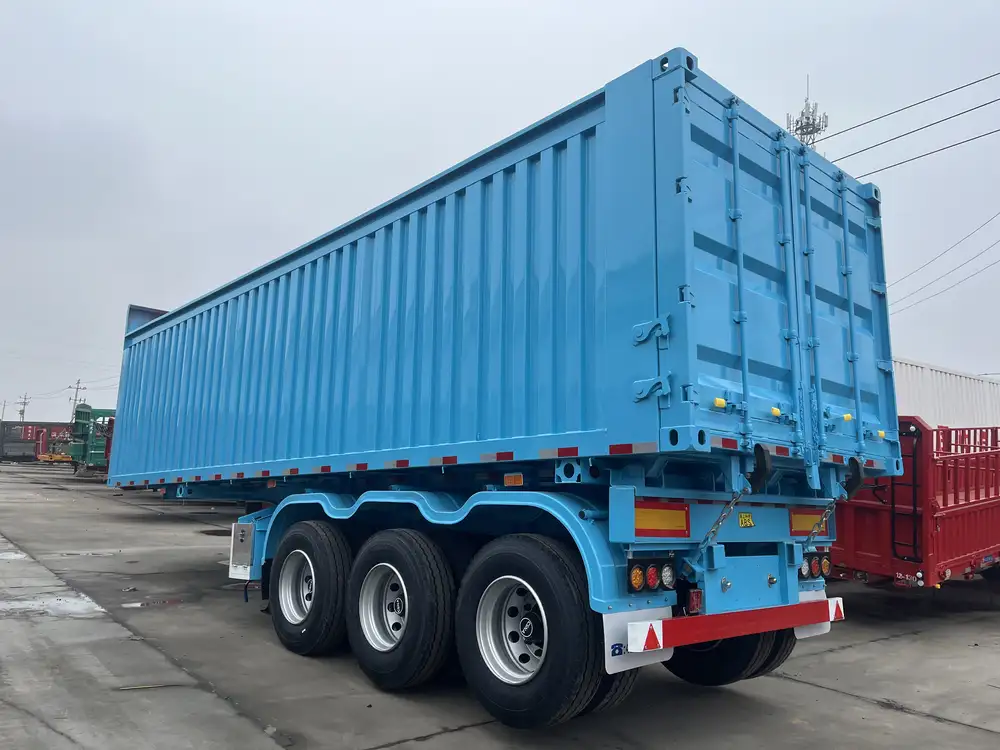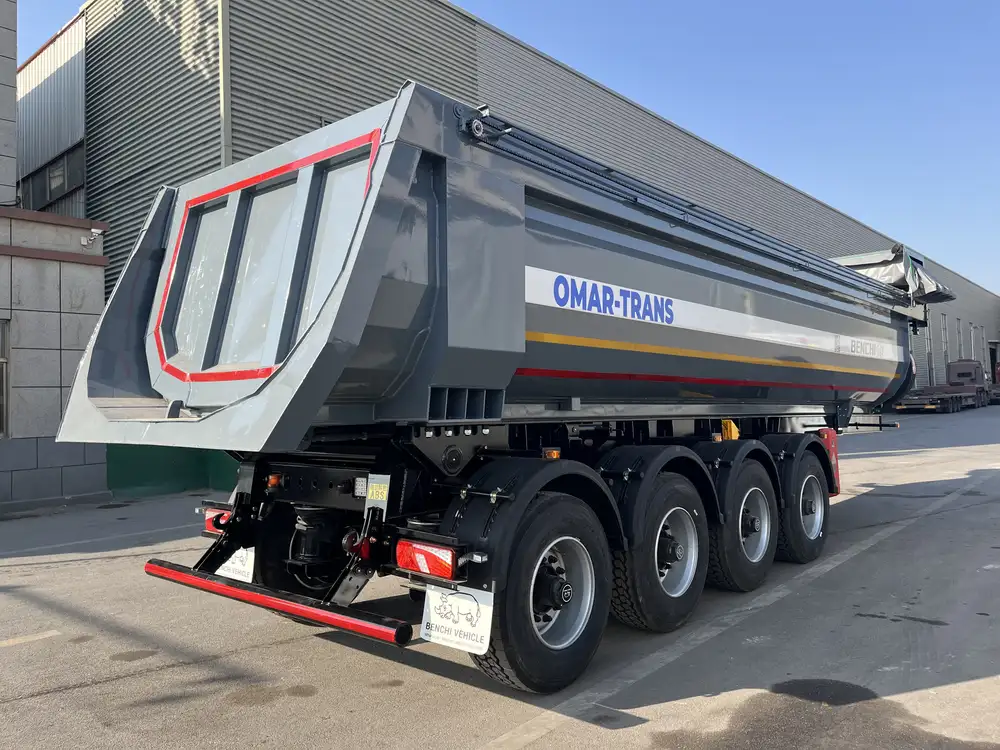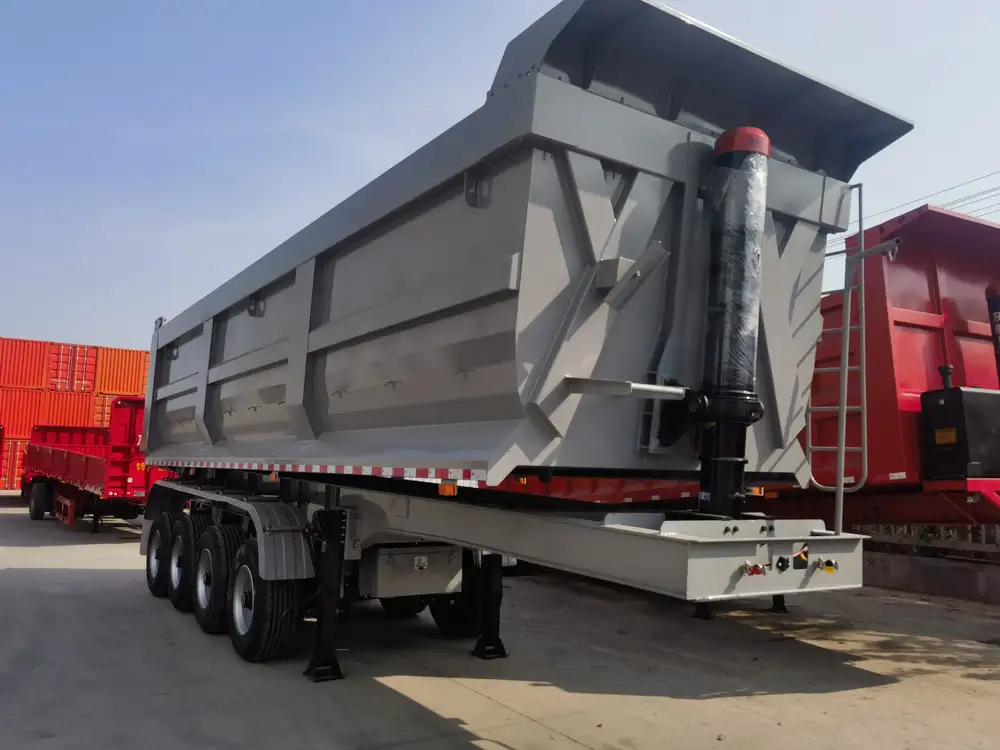Flatbed trailers are an essential component of the transportation and logistics industry, offering unparalleled versatility and adaptability for a wide range of cargo. At CarMax Vehicle, we recognize that the height of a flatbed trailer is a critical factor that influences not only the efficiency of transportation but also compliance with regulatory standards and overall safety. In this extensive guide, we delve deep into the nuances of flatbed trailer height, exploring its significance, standards, influencing factors, and optimization strategies to help you make informed decisions and enhance your logistics operations.
Table of Contents
- Introduction to Flatbed Trailers
- The Importance of Flatbed Trailer Height
- Standard Flatbed Trailer Heights
- Regulatory Compliance and Flatbed Trailer Height
- Key Factors Influencing Trailer Height
- Optimizing Flatbed Trailer Height for Efficiency
- Customization Solutions by CarMax Vehicle
- Comparative Analysis: Flatbed Trailer Height vs. Other Trailer Types
- Maintenance and Safety Tips for Optimal Trailer Height
- Frequently Asked Questions
Introduction to Flatbed Trailers
Flatbed trailers are characterized by their open, flat platform without sides or a roof, making them exceptionally versatile for transporting a variety of cargo types, including oversized, irregularly shaped, and heavy-duty goods. This design facilitates easy loading and unloading, especially for materials that exceed standard container dimensions. However, the flatbed’s simplicity also means that several factors, including trailer height, must be meticulously considered to ensure optimal performance and compliance.

The Importance of Flatbed Trailer Height
Flatbed trailer height is a pivotal aspect that affects multiple dimensions of transportation operations:
Load Capacity: The height determines the maximum vertical dimension of cargo that can be accommodated, directly influencing the types of goods that can be transported.
Regulatory Compliance: Adhering to height restrictions imposed by transportation authorities is crucial to avoid fines, delays, and safety hazards.
Fuel Efficiency: Trailer height impacts aerodynamic performance, thereby influencing fuel consumption and overall operating costs.
Safety and Stability: Proper trailer height contributes to the vehicle’s center of gravity, affecting stability during transit, especially in adverse weather conditions or on uneven terrains.
Operational Flexibility: Adjustable or customized trailer heights can enhance the versatility of transportation operations, allowing for a broader range of cargo types and sizes.
Understanding and optimizing trailer height is essential for maximizing efficiency, ensuring safety, and maintaining regulatory compliance in transportation operations.
Standard Flatbed Trailer Heights
Flatbed trailers come in various standard heights, each designed to cater to different transportation needs. The most common standard heights include:
| Trailer Type | Height (inches) | Typical Applications |
|---|---|---|
| Standard Flatbed | 48-54 | General cargo, construction materials, machinery |
| Low-Profile Flatbed | 42-48 | Oversized equipment, reduced air draft requirements |
| High-Clearance Flatbed | 60+ | Transporting exceptionally tall or large items |
At CarMax Vehicle, we offer a diverse range of flatbed trailer heights to meet the specific demands of our clients, ensuring that each trailer delivers optimal performance and compliance with relevant standards.
Regulatory Compliance and Flatbed Trailer Height
Compliance with height regulations is non-negotiable in the transportation industry. Different regions impose varying height restrictions to ensure road safety and infrastructure compatibility. Key regulatory considerations include:
Federal Standards: In the United States, the Federal Highway Administration (FHWA) sets maximum height limits, typically around 13 feet 6 inches for interstate highways.
State Regulations: Individual states may have specific height limits that can vary, especially on local roads, bridges, and tunnels.
International Guidelines: Cross-border transportation requires adherence to international height standards, which may differ from domestic regulations.
Special Permits: Oversized loads may require special permits, which involve strict adherence to height limitations and additional safety measures.
CarMax Vehicle ensures that our flatbed trailers are designed and maintained to comply with all relevant federal, state, and international height regulations, minimizing the risk of compliance-related issues and ensuring smooth transportation operations.

Key Factors Influencing Trailer Height
Several critical factors influence the optimal height of a flatbed trailer, each playing a role in determining the best design and functionality for specific transportation needs.
1. Load Type and Dimensions
The nature of the cargo is a primary determinant of trailer height. Understanding the dimensions and characteristics of the cargo helps in selecting a trailer height that accommodates the load without compromising safety or compliance.
Oversized Loads: Items such as construction machinery, large equipment, and prefabricated structures require higher trailer heights to accommodate their vertical dimensions.
Standard Cargo: General goods and materials that fit within standard height limits benefit from adjustable trailer heights for enhanced versatility.
2. Vehicle Compatibility
The towing vehicle’s specifications must align with the trailer height to maintain balance and stability. Mismatched heights can lead to handling difficulties, increased wear on vehicle components, and potential safety hazards.
GVWR Considerations: The Gross Vehicle Weight Rating (GVWR) of the towing vehicle should support the loaded trailer height without exceeding capacity limits.
Suspension and Chassis: Compatible suspension systems and chassis design are essential for maintaining optimal trailer height and vehicle stability.

3. Maneuverability and Accessibility
Trailer height affects the ease of maneuvering in various environments, including urban settings, tight loading areas, and construction sites. Lower trailer heights can enhance accessibility and reduce the risk of collisions with overhead obstructions.
Loading Zones: Environments with limited vertical clearance benefit from lower trailer heights to facilitate easier entry and exit.
Turning Radius: Appropriate trailer height contributes to a manageable turning radius, essential for navigating through congested or confined spaces.
Optimizing Flatbed Trailer Height for Efficiency
Optimizing trailer height involves a strategic balance of multiple factors to enhance operational efficiency, safety, and cost-effectiveness.
1. Enhancing Stability and Safety
A well-optimized trailer height ensures a low center of gravity, contributing to enhanced stability during transit. Stability is crucial for:
Preventing Cargo Shifts: Proper height alignment prevents cargo movement that could destabilize the trailer.
Reducing Roll Risks: Lower heights minimize the risk of rolling over during sharp turns or in high winds.
Improving Braking Efficiency: Balanced trailer heights contribute to more effective braking performance, reducing stopping distances and enhancing overall safety.

2. Improving Fuel Efficiency
Aerodynamic considerations related to trailer height directly impact fuel consumption. Higher trailers may experience increased air resistance, leading to higher fuel usage. Strategies to improve fuel efficiency include:
Aerodynamic Design: Incorporating streamlined features to reduce drag without compromising cargo capacity.
Lightweight Materials: Utilizing materials that reduce overall trailer weight, thereby enhancing fuel efficiency regardless of height.
3. Facilitating Loading and Unloading Operations
Efficient loading and unloading processes are integral to minimizing downtime and labor costs. Optimal trailer height contributes to:
Ease of Access: Suitable heights allow for quicker and more straightforward loading and unloading, especially in automated systems.
Compatibility with Equipment: Aligning trailer height with loading equipment such as forklifts and cranes prevents operational bottlenecks.
Flexibility for Diverse Cargo: Adjustable heights cater to various cargo sizes and shapes, enhancing operational flexibility.
Customization Solutions by CarMax Vehicle
At CarMax Vehicle, we understand that one size does not fit all in the realm of transportation. Our customization solutions ensure that flatbed trailer heights are tailored to meet the unique needs of each client, enhancing efficiency and compliance.

1. Tailored Height Designs
Our engineering team collaborates closely with clients to design trailers with specific height requirements, ensuring compatibility with cargo dimensions and transportation environments. Whether you need a standard height or a highly specialized configuration, we provide solutions that align with your operational goals.
2. Advanced Materials and Construction
Utilizing cutting-edge materials and construction techniques, we manufacture flatbed trailers that offer durability without unnecessary weight. This approach allows for higher payload capacities and optimized height without compromising structural integrity.
3. Innovative Suspension Systems
Our trailers are equipped with advanced suspension systems that allow for adjustable heights, providing flexibility to adapt to different load types and road conditions. These systems enhance ride quality, reduce wear on vehicle components, and contribute to overall operational efficiency.

Comparative Analysis: Flatbed Trailer Height vs. Other Trailer Types
Understanding how flatbed trailer height compares to other trailer types is essential for selecting the right vehicle for your transportation needs. Below is a comparative analysis highlighting key differences:
| Trailer Type | Typical Height (inches) | Key Advantages | Ideal Use Cases |
|---|---|---|---|
| Flatbed | 42-60 | Versatility, easy loading/unloading, customizable | Construction materials, machinery, oversized cargo |
| Enclosed (Dry Van) | 50-60 | Protects cargo from elements, security | Retail goods, perishables, electronics |
| Refrigerated (Reefer) | 52-58 | Temperature-controlled, extended transport distances | Perishable food, pharmaceuticals |
| Step Deck (Drop Deck) | 40-48 | Lower overall height with elevated deck, extra clearance | Oversized loads requiring reduced air draft |
| Lowboy | 35-45 | Extremely low height for heavy/heavy-duty equipment | Construction machinery, industrial equipment |
At CarMax Vehicle, our flatbed trailers offer a competitive edge with customizable heights that cater to a broad spectrum of transportation requirements, ensuring that your cargo is transported safely and efficiently.
Maintenance and Safety Tips for Optimal Trailer Height
Proper maintenance is crucial to ensure that flatbed trailer height remains optimal, enhancing safety and prolonging the lifespan of the trailer.
1. Regular Inspections
Conduct routine inspections of all trailer components, including suspension systems, tires, and structural elements, to identify and address wear or damage that could affect trailer height and stability.

2. Load Management
Ensure that loads are evenly distributed and do not exceed the trailer’s height and weight capacities. Proper load management prevents undue stress on trailer components and maintains balance during transit.
3. Compliance Checks
Stay informed about changes in height regulations and ensure that your trailer remains compliant. Regularly verify that modifications or customizations meet current standards.
4. Seasonal Adjustments
Adjust trailer height settings based on seasonal road conditions. For example, lower heights may be preferable in winter to navigate snow-covered roads more effectively, while higher settings may be advantageous in dry conditions to accommodate larger loads.

5. Professional Maintenance
Engage with professional maintenance services to perform in-depth checks and repairs. CarMax Vehicle offers maintenance support to ensure that your trailer remains in peak condition.
Frequently Asked Questions
1. What is the standard height range for flatbed trailers?
The standard height range for flatbed trailers typically falls between 42 to 60 inches. However, this can vary based on specific needs and customization.

2. How does trailer height affect fuel efficiency?
Trailer height influences aerodynamic drag; higher trailers may experience increased air resistance, leading to higher fuel consumption. Optimizing height with aerodynamic designs can mitigate this effect.
3. Are there specific regulations for flatbed trailer height?
Yes, flatbed trailer heights are subject to federal, state, and international regulations that dictate maximum allowable heights to ensure safety and infrastructure compatibility.
4. Can trailer height be adjusted for different types of cargo?
Yes, certain flatbed trailers come equipped with adjustable suspension systems that allow for height modifications to accommodate various cargo types and sizes.

5. How does CarMax Vehicle ensure compliance with height regulations?
CarMax Vehicle designs and manufactures flatbed trailers in adherence to all relevant federal, state, and international height regulations, incorporating features that facilitate compliance and operational efficiency.
By comprehensively understanding and strategically managing flatbed trailer height, you can significantly enhance your transportation operations’ efficiency, safety, and compliance. CarMax Vehicle is committed to providing top-tier flatbed trailers that meet your specific height requirements, ensuring that your logistics operations run smoothly and effectively. For more detailed information or to explore customization options, contact us today to discover how our expertise can support your transportation needs.



